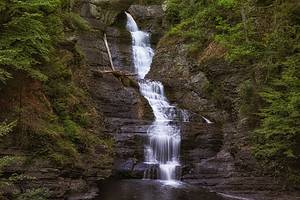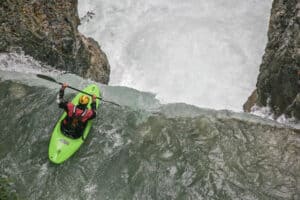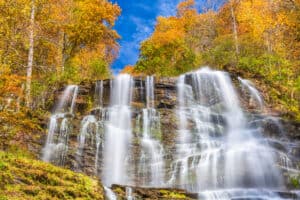Niagara Falls is an iconic waterfall known worldwide. But how wide is Niagara Falls compared to other waterfalls? Niagara Falls is the ninth widest waterfall in the world.
Let’s take a closer look at the width of Niagara Falls compared to other impressively wide waterfalls on Earth. Can you guess which ones are wider or less wide than Niagara Falls? Keep reading to find out!
The History of Niagara Falls
The first European on record to see the falls was French explorer Samuel de Champlain in 1604. Niagara Falls, which is located on the border between Canada and the United States, became increasingly popular as a tourist destination in the 19th century. As a result, Niagara Falls State Park was established on the American side in 1885. This park is famous for being the oldest state park in the United States.
Today, Niagara Falls is a hugely popular tourist destination in both Canada and the United States.
How Wide Are Each of the Falls at Niagara Falls?
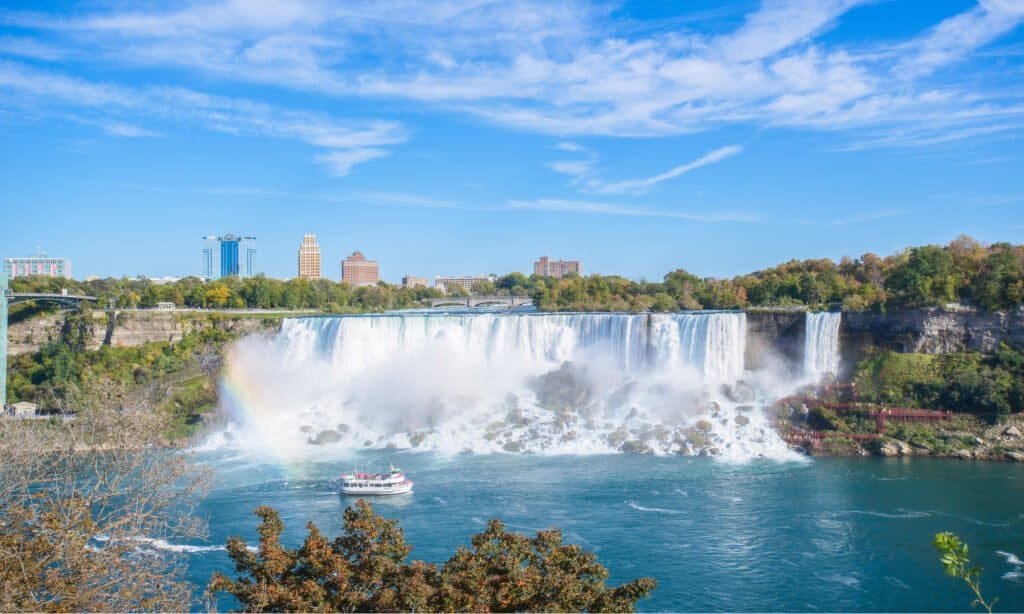
Niagara Falls has 3 falls with a total width of 3,950 feet across.
©YingHui Liu/Shutterstock.com
Niagara Falls is one of the widest, measuring 3,950 feet if all three of its waterfall widths are combined. Horseshoe Falls, also known as Canadian Falls, is the largest of the three waterfalls that make up Niagara Falls. It flows on the Canadian side of the border between Canada and the United States. Horseshoe Falls is wider than American Falls and Bridal Veil Falls, located on the American side of the border. Horseshoe Falls is 2,700 feet (820 meters) wide, while American Falls is 950 feet (290 meters) wide, and Bridal Veil Falls is 56 feet (17 meters)wide at its crest.
Niagara Falls hosts millions of tourists each year who visit the incredible waterfalls here. But is Niagara Falls the widest waterfall in the world? Not by a long shot! Khone Phapheng Falls wins that prize.
Niagara Falls vs. Khone Phapheng Falls
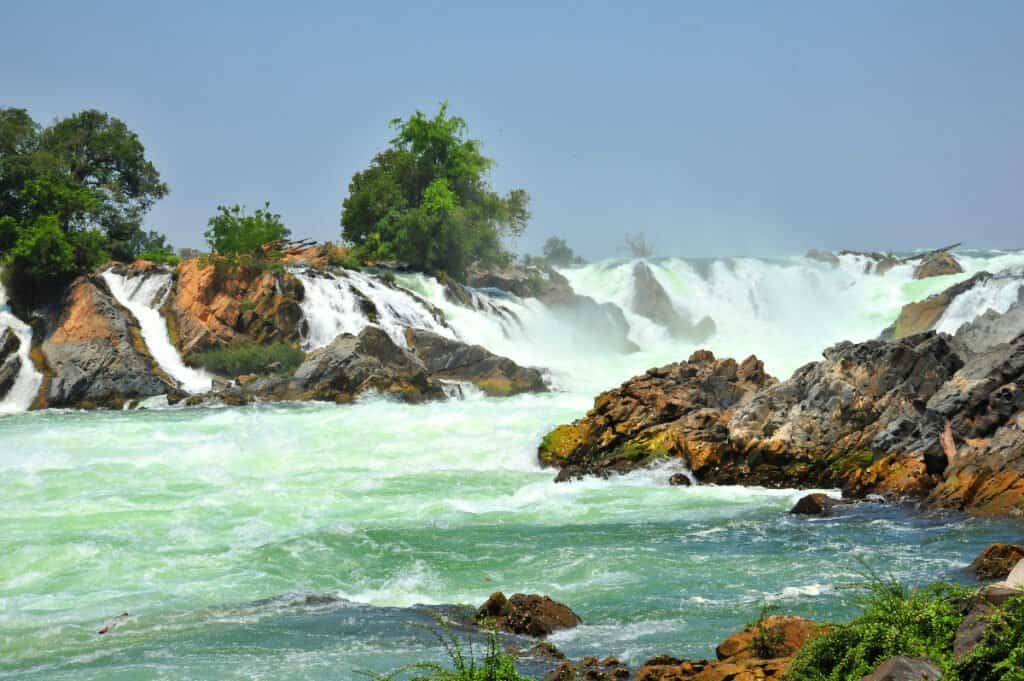
At 35,376 feet across, Khone Phapheng Falls is much wider than Niagara Falls.
©Kritsana.p/Shutterstock.com
Khone Phapheng Falls is located in Laos and is the widest waterfall in the world. The Khone Phapheng Falls spans an incredible 35,376 feet (10,782 meters or 6.7 miles) across. Niagara Falls spans a more modest 3,950 feet across.
Southeast Asia’s largest waterfall, Khone Phapheng Falls, combines Phapheng Falls and Khone Falls. The combined Khone Phapheng Falls and its many islands sit in the Mekong River in southern Laos. It sits near the town of Ban Muang Mom in Champasak Province.
The falls were formed over millions of years as the Mekong River carved its way through the limestone rock of the area. The river has created a series of rapids and smaller waterfalls leading up to the main event – Khone Phapheng Falls.
Like Niagara Falls, this waterfall is world-famous for its size and beauty. But there’s another vast waterfall that has Niagara Falls beat when comparing impressive widths. Of course, we’re talking about Pará Falls in the Amazon rainforest!
Niagara Falls vs. Pará Falls
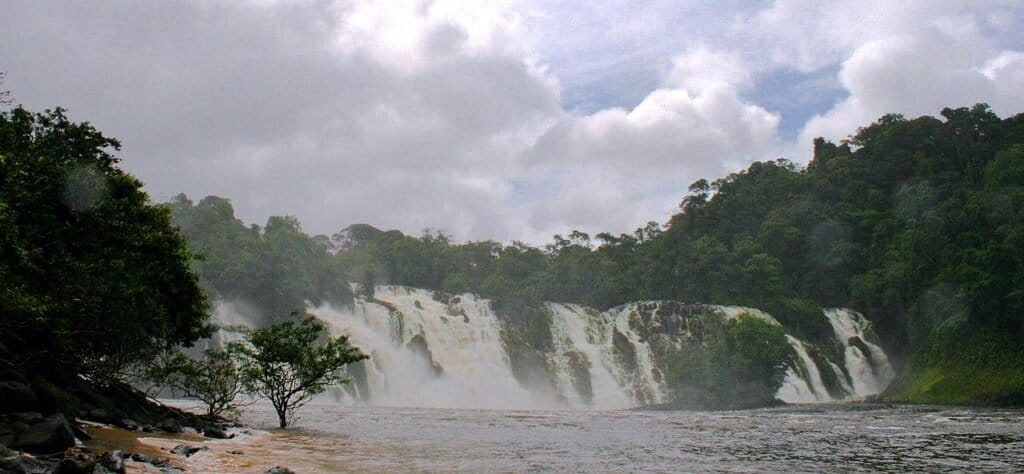
The Pará Falls waterfall is over five times the width of Niagara Falls!
©Luisovalles / Creative Commons – License
Pará Falls (a.k.a Salto Pará) in South America is a fantastic sight to see. This waterfall is 18,400 feet (5,608 meters) wide! That’s over five times the width of Niagara Falls!
Pará Falls is located in Venezuela on the Caura River and is one of the most beautiful waterfalls in the world. Twelve falls total make up Pará Falls in the Orinoco rainforest.
Pará Falls is a popular destination for adventure seekers and nature lovers. The falls are a great place to hike, swim, and relax. But it takes at least a 2-hour walk through the rainforest to get to Pará Falls, so wear your comfy hiking shoes!
Pará Falls’ waters are home to an Amazon River Dolphin called the Boto in Portuguese. These freshwater dolphins are usually a soft pink color, making them a memorable sight to see. However, Botos are critically endangered due to poaching and environmental toxicity from rising pollution levels in the area.
So, are there other majestic waterfalls in the world much wider than Niagara Falls? Indeed, there are! Another South American waterfall called Iguazu Falls has tremendous width and fascinating history.
Niagara Falls vs. Iguazu Falls
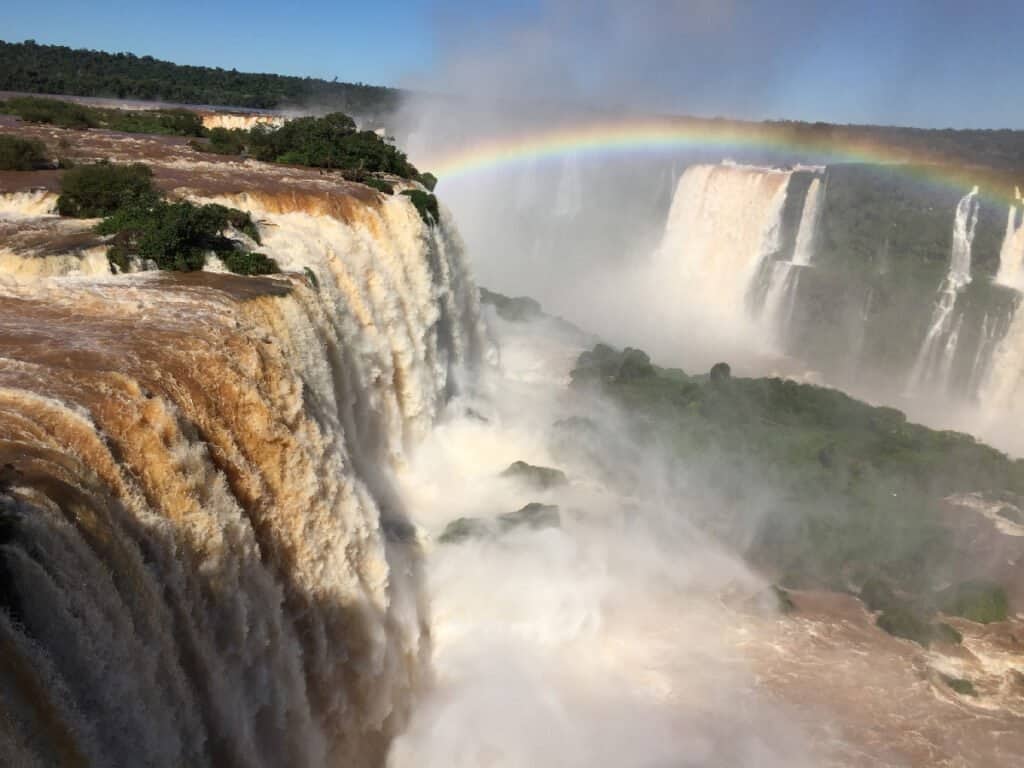
Iguazu Falls in South America is about three times as wide as Niagara Falls.
©Lorikeet00/Shutterstock.com
In terms of sheer size, Iguazu Falls dwarf Niagara Falls. This South American waterfall is 1.7 miles (2.7 km) wide, around three times as wide as Niagara Falls!
Iguazu Falls (or Iguacu Falls) sits on the Iguazu River border between Argentina and Brazil. The falls consist of 275 individual drops ranging from 60 to 82 feet. Many of the falls flow into a long, deep canyon called Devil’s Throat.
There’s some fascinating wildlife living in the area around Iguazu Falls! You can find Harpy eagles, pumas, and Giant anteaters in this part of South America.
Iguazu Falls have a long and storied history. The falls formed around 20 million years ago when a volcanic eruption caused the Iguazu River to change course. The first European to come across the falls was Spanish conquistador Álvar Núñez Cabeza de Vaca in 1541.
This waterfall compares to a famous one in Africa called Victoria Falls. Victoria Falls is also wider than Niagara Falls!
Niagara Falls vs. Victoria Falls
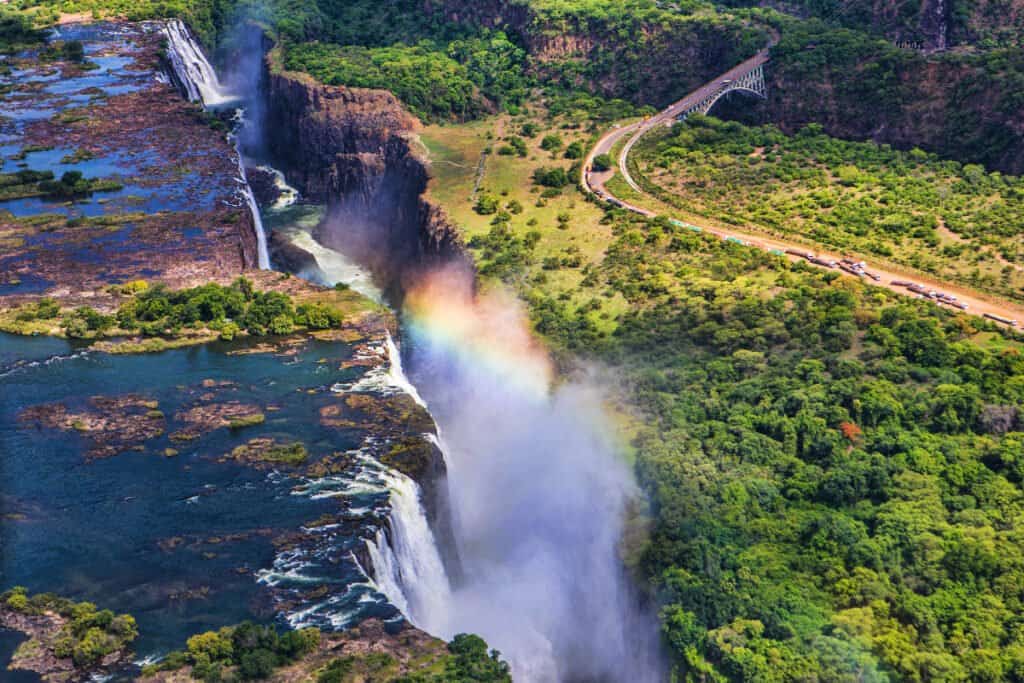
The Victoria Falls waterfall is about a mile wider than Niagara Falls.
©Eva Mont/Shutterstock.com
Victoria Falls in Southern Africa is about 1.06 miles (1.7 km) wide. Compared to Niagara Falls in the United States, Victoria Falls is wider by a mile. Also, Niagara Falls has a higher flow rate, while Victoria Falls has a higher average drop.
Victoria Falls flows in the Zambezi River between Zambia to the north and Zimbabwe to the south. The falls were originally named Mosi-oa-Tunya by the indigenous people living in the area, which means “The Smoke That Thunders.” However, the falls were given their English name (for Queen Victoria) by Scottish explorer David Livingstone during his expedition to the area in 1855.
There are loads of safari tours available in the area of Victoria Falls, where visitors can see white rhinos, elephants, and lions, among other African animals.
The combined height (355 feet tall) and width of Victoria Falls give it the claim to fame as the largest sheet of falling water worldwide.
And there are more massive waterfalls to discover! Have you heard of Inga Falls? It’s another fantastic African waterfall that’s wider than Niagara Falls.
Niagara Falls vs. Inga Falls
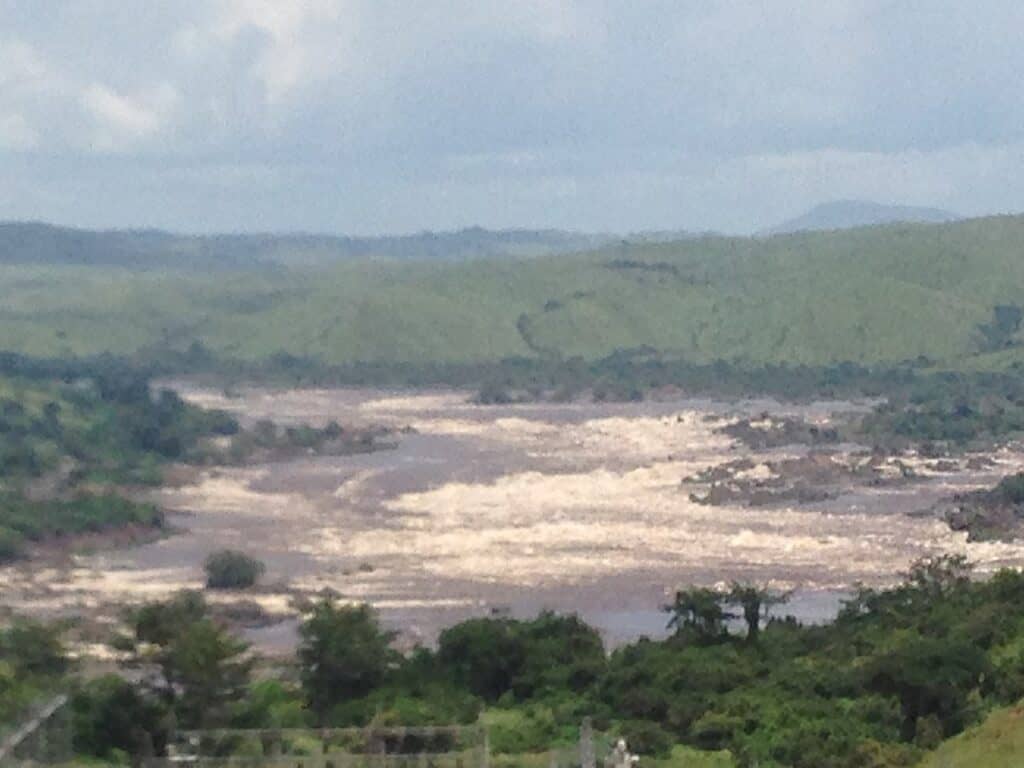
The Inga Falls waterfall is famous for its two hydroelectric dams.
©Χρίστος Ιμμανοελ / Creative Commons – License
With an average width of 914 meters (3,000 feet), Inga Falls has a smaller width than Niagara Falls. Flowing along the Congo River in the Democratic Republic of the Congo, Inga Falls is one of the largest waterfalls in the world.
Although it is not as well-known as Niagara Falls, Inga Falls is an awe-inspiring sight. The Congo River is the second-longest river in Africa. The waterfalls at Inga Falls are so powerful that they can generate enough electricity to power the entire Congo. Inga Falls is home to two hydroelectric dams, called Inga I and Inga II, with more dam builds in the works.
The history of Inga Falls is as fascinating as its size and power. For centuries, the falls have been an essential part of Congolese culture. Then, in the early 1900s, the Belgian Congo government decided to harness the power of the falls and build a hydroelectric dam. The Inga I dam opened in 1972, and Inga II opened in 1982. Both are still in use today.
Let’s move from Congo to Canada now, where gorgeous Vermilion Falls is another waterfall wider than Niagara Falls.
Niagara Falls vs. Vermilion Falls
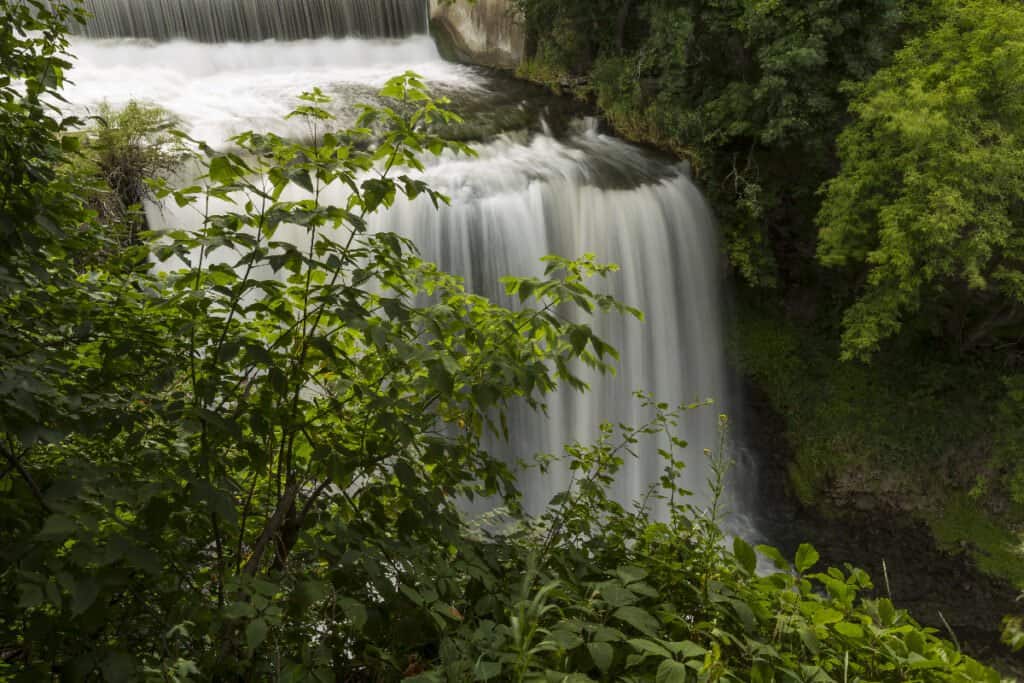
The Vermillion Falls are 6,000 feet wide.
©John Brueske/Shutterstock.com
Vermillion Falls in Alberta, Canada, has an average width of 6,000 feet (1.8 km) compared to Niagara Falls at 3,950 feet across. So, Vermilion Falls is quite a bit wider!
Vermilion Falls got its name from the reddish color of the rocks near the falls. The falls were formed over millions of years as water from melting glaciers carved out a path through the stone. Made of fan-shaped steps carved into shale and limestone cliffs, Vermilion Falls tumbles down from the Vermilion Rapids in Peace River.
As the largest waterfall in Canada and the 6th largest waterfall worldwide, Vermilion Falls is likely as famous in its homeland as Niagara Falls is in the United States.
Next up on our list of waterfalls is another famous one in the US — Yosemite Falls in Yosemite National Park. Is it wider than Niagara Falls? Read on to get the stats!
Niagara Falls vs. Yosemite Falls
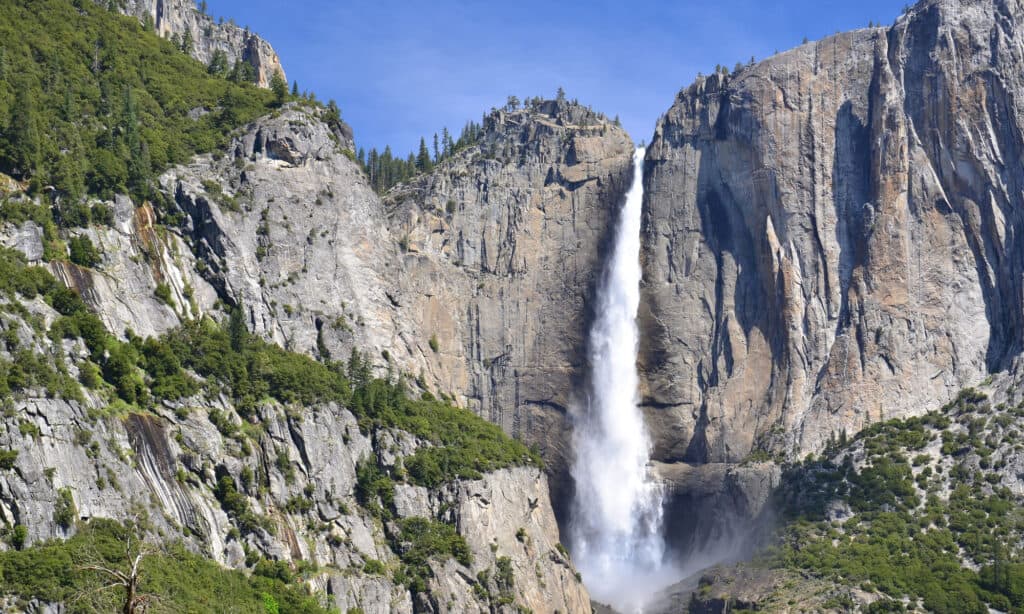
At its widest point, Yosemite Falls is about 100 feet across.
©A.Hornung/Shutterstock.com
Yosemite Falls is one of the most revered waterfalls in America, but it’s nowhere near as wide as Niagara Falls. The average width of Yosemite Falls is 100 feet (30 meters).
Like Niagara Falls, Yosemite Falls is a combination of three falls total. Those three falls are the Upper Yosemite Fall, the Middle Cascades, and the Lower Yosemite Fall. Together, they make up a total height of 2,425 feet.
Yosemite Falls has a long and storied history. Native Americans considered it a sacred place, and it was even home to a tribe of giant ground sloths. In 1851, the Mariposa Battalion became the first group of white people to discover Yosemite Valley and see the falls.
Since then, Yosemite Falls has become one of America’s most popular tourist destinations. Every year, millions of people see the falls and experience their grandeur. However, Yosemite Falls is almost entirely inactive in summer and fall. Therefore, spring is the best season to visit Yosemite Falls and the other waterfalls in Yosemite National Park.
Another beautiful waterfall in the US you should consider visiting is Shoshone Falls in Idaho. Shoshone Falls isn’t as wide as Niagara Falls, but it still has the nickname “Niagara of the West.”
Niagara Falls vs. Shoshone Falls
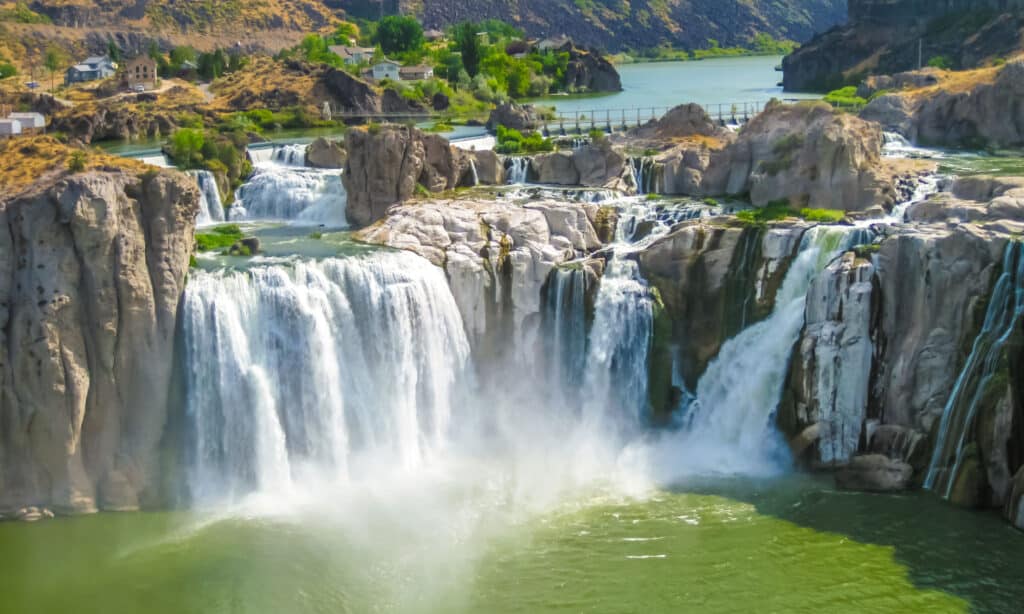
Niagara Falls has a greater width than Shoshone Falls.
©Benny Marty/Shutterstock.com
Shoshone Falls near Twin Falls, Idaho, is an amazing natural wonder at about 900 feet (274meters) in width. That’s over three times less wide than Niagara Falls, but Shoshone Falls is 45 feet higher.
Fed by the Snake River, which runs through Idaho, Oregon, and Washington, Shoshone Falls is the uppermost level of salmon migration in these waters.
Late spring flow over Shoshone Falls is as high as 20,000 cubic feet per second. So, as with many waterfalls in North America, spring is the best season to see Shoshone Falls at its finest!
Shoshone Falls has a long and fascinating history. It was a major fishing landmark for Native Americans and settlers alike. Today, like Niagara Falls, Shoshone Falls is a popular tourist destination for nature lovers worldwide.
Niagara Falls: Not the Widest, but World Famous
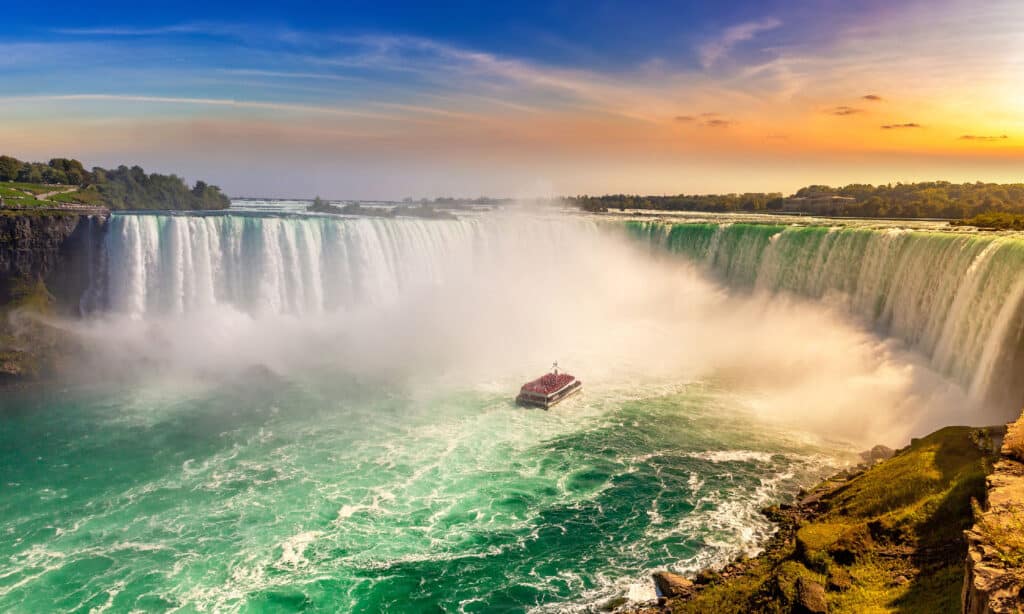
Majestic Niagara Falls spans the border between Canada and the United States.
©iStock.com/bloodua
Niagara Falls may not be the widest waterfall in the world at 3,950 feet across. However, it is still an extraordinary and world-famous site. With three falls spanning the border between Canada and the United States, Niagara Falls is a national treasure for both countries. This waterfall is so beloved that there is some concern that erosion could someday make Niagara Falls disappear.
There are many more large waterfalls across the globe that deserve mention for their magnificent width! Which ones are your favorites?
Where is Niagara Falls Located on a Map?
Niagara Falls is about 20 miles slightly northwest of Buffalo, New York, where a strip of Canada reaches over to New York state between Lake Erie and Lake Ontario. Within the American park, there is an Observation Tower that juts out over Niagara Gorge for a view of all three waterfalls.
The photo featured at the top of this post is © CPQ/Shutterstock.com
FAQs (Frequently Asked Questions)
Do fish survive the trip over Niagara Falls?
Yes, it’s estimated that about 90% of fish that go down Niagara Falls survive. Whether or not they survive depends on which falls (the Canadian Falls have a less rocky landing spot), and the size of the fish.
How does Niagara Falls compare to other tall waterfalls?
The waterfall with the highest uninterrupted drop is Angel Falls in Venezuela. That waterfall is 3,212 feet tall, making it about 17X the height of Niagara Falls!
Thank you for reading! Have some feedback for us? Contact the AZ Animals editorial team.



